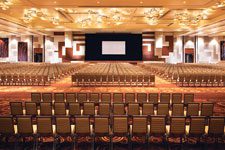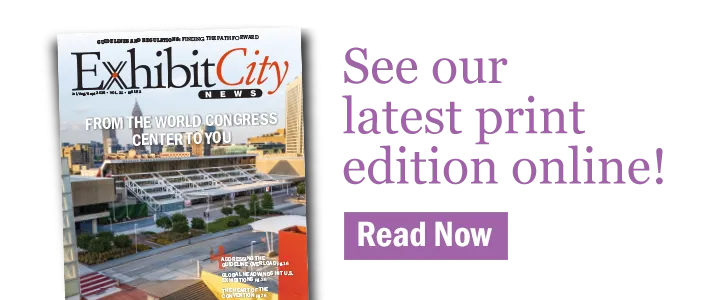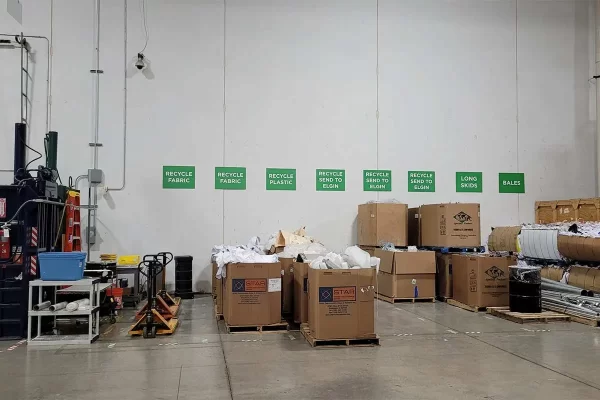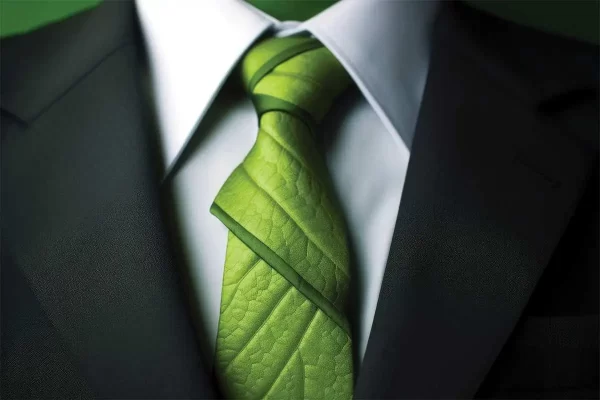
The word paradise is Persian in origin and literally means “a walled garden.” As the exhibit industry’s eco-consciousness increases, walled gardens are springing up everywhere in the form of sustainable convention venues.
The U.S. Green Building Council (USGBC) is the non-profit organization charged with administering Leadership in Energy & Environmental Design (LEED) standards for construction and maintenance of sustainable buildings.
“Given the significant environmental footprint of buildings and that meeting and convention centers are typically large scale buildings, the USGBC has identified that the greening of these venues can save significant energy, water, carbon dioxide and solid waste,” said Jennifer Turchin, NCARB, AIA, LEED AP BD+C and secretary of USGBCNV. “Business meetings in the United States alone are a $175 billion industry. This combination is the perfect opportunity to reduce the negative environmental impacts in buildings along with educating a large sector of the public to the value of green building.”
At the September 7, 2010 Clean Energy conference in Las Vegas, Nev., Jim Murren, chairman and CEO for MGM Resorts International, explained that the recently completed City Center complex is the largest sustainable facility of its kind, with 6 LEED Gold certifications. Murren went on to say that providing sustainable meeting environments is important to winning conventions.
MGM Mirage formed its energy and environmental services division four years ago. As part of this program, the company created sustainable meeting facilities.
“We believe it’s where the market is moving and there is a solid business case for providing green facilities,” said Michele Diener, director of corporate sustainability strategies, MGM Mirage. “Doing more with less is a differentiator and will attract more business.”
So how is MGM doing more with less?
The company employs a five-prong strategy: energy/water conservation; green construction practices; waste management with an emphasis on reducing and reusing; utilization of a sustainable supply chain; and outreach and education directed at employees, suppliers, community, and guests.
“Clients and guests are becoming more environmentally conscious so we strive to meet those needs in every aspect of our business,” said Diener.
The Chicago Mart Plaza was also recently recognized as the largest LEED gold certified hotel in North America.
“We are a 521 room atrium hotel that starts on the 14th floor of a high-rise, office building” said France A. Langan, CHA, director of sales and marketing. “We have over 25,000 square feet of meeting space. On September 30, 2010 the federal government signed a Federal Travel Resolution that requires government travelers to seek out green hotels and meeting facilities, so we hopefully will see the benefits.”
The Dallas Convention Center achieved its LEED certification as part of a city-wide green initiative. In addition to facility improvements, which dramatically improved efficiencies in areas of energy and water consumption, the center has implemented sustainable purchasing policies and green cleaning procedures.
“An environmental management system requires all specifications to contain environmental friendly components,” wrote R. Kirk Johnson, AIA, LEED AP, in his case study of the Dallas Convention Center. “The upgraded, greener Dallas Convention Center offers clients an environmentally safe facility emphasizing environmental elements at events. Landfill usage has been greatly reduced. The recycling program was expanded to encourage tradeshow involvement.”
LEED projects also provide opportunities for professionals to share ideas for the advancement and diversification of green business.
The Colorado Convention Center in downtown Denver recently achieved its LEED certification. According to Meetingsnet.com, more than 100 professional meeting planners worked with architects to design the building.
Jim Murren emphasized that MGM’s efforts in designing City Center expanded expertise and knowledge by means of the collaborative efforts of construction professionals, designers, vendors, and suppliers.
“It allows us to be more creative and work with new partners,” said Diener. “New products improve on the successes we’ve had in the past. Having so many more choices available now increases what we are able to do for clients and the community.”
While more LEED venues are becoming available, the USGBC recognizes that meeting planners may not always have access to certified facilities. To help bridge this gap, the USGBC has published its Green Venue Selection Guide. The guide’s stated purpose is to help planners evaluate facilities based upon key sustainability factors; energy, transportation, water efficiency, sustainable purchasing, waste management, and occupant health.
The cooperative efforts of show planners, exhibitors and host venues continue to transform the tradeshow industry from an inefficient consumer of resources to a promoter of eco-commerce and a steward of a sustainable paradise.
The Pinyon Ballroom, inside the City Center, has a combined area for product display and meetings of just over 90,000 square feet.
| Home |
| People on the Move |
| National News |
| Regional News |
| Features |
| Tradeshow Calendar |






























